Soft grippers load the Innolas wafer sorting machine
- Details
- Hits: 8218
It's not just the gentleness, the mechatronic grab from Gimatic as an advantage over pneumatic show. Their use also reduces the overall costs: They are much easier to use, maintenance-free and suitable for clean rooms. All advantages why they are among the developers of the Wafer Marking and sorting systems from Innolas Arouse enthusiasm. Read why the swivel unit and gripper have also prevailed over other mechatronic solutions from the laser specialist.
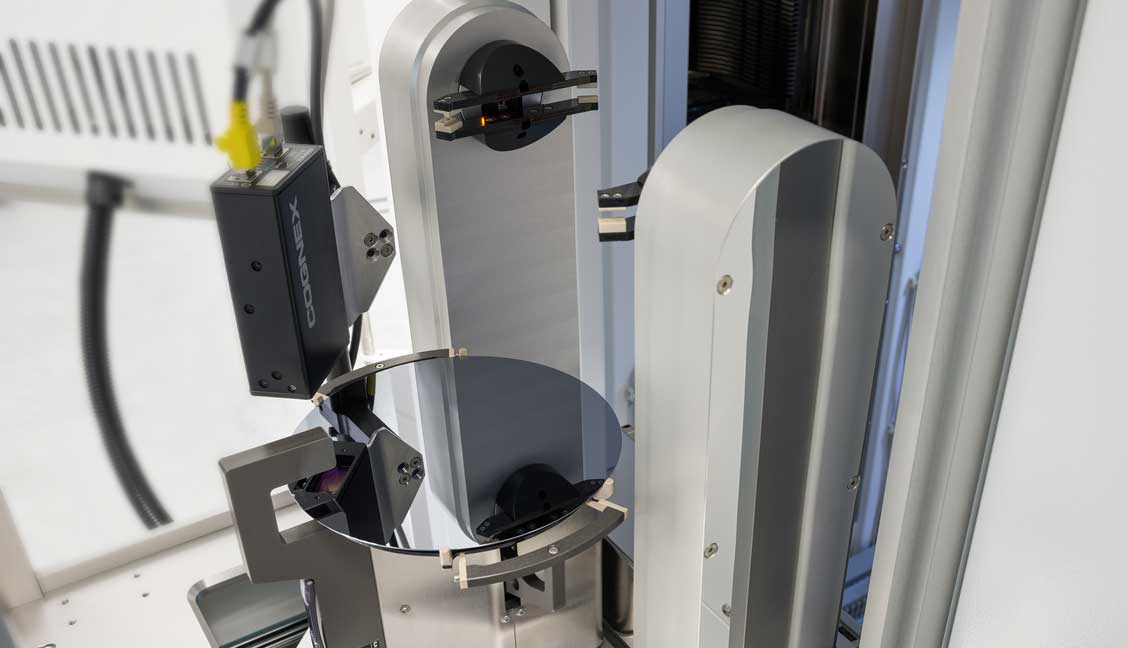
Content of the cover story
- Wafer marking and sorting systems for semiconductors
- Gentle removal of the wafers
- It's worthwhile to rethink mechatronics
- Taste of speed and pin
“I haven't found any other manufacturer who builds this in such a compact way,” says Sven Wollstadt, Head of Development at Innolas Semiconductor GmbH, Krailling. When developing a new wafer sorting machine, he opted for electrically powered components from Gimatic. This is the first time that he has not used a pneumatic solution, and that should stay that way for future new developments.
Wafer marking and sorting systems for semiconductors
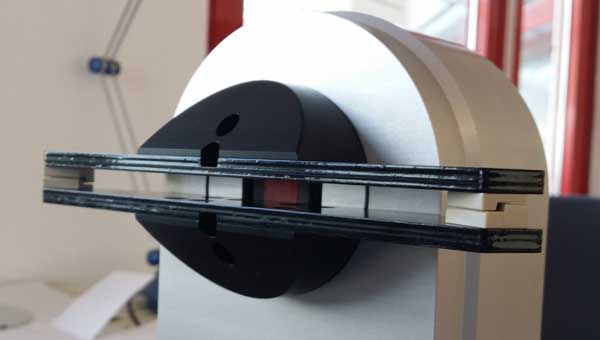 The superordinate holding company based in Germany Innolas was founded in 1995. With its four sister companies, it has produced innovative laser technology for industrial and scientific applications for customers all over the world.
The superordinate holding company based in Germany Innolas was founded in 1995. With its four sister companies, it has produced innovative laser technology for industrial and scientific applications for customers all over the world.
Innolas Semiconductor has focused on manufacturing high quality Marking and sorting solutions of wafers for the semiconductor industry in a ratio of 70 to 30 percent. Customer-specific solutions have been the flourishing core business of the 20 employees for over 25 years.
For all machines in the portfolio, the selection of subcomponents focuses on their quality and the know-how of the specialists. In order to meet the highest purity requirements of the end customers, all systems are produced and put into operation in the company's own ISO6 clean room (ISO 14644-1).
Innolas expertise
“Our customers get the machines delivered to their production rooms ready for use in clean rooms,” describes Thomas Roelz from sales a unique selling point of his company. The references include numerous world-famous global players in the wafer and chip industry. Around 20 to 30 special machines leave the house of the market leader in Europe and the budding market leader in Asia and the USA, where 50 percent of the business currently arrives.
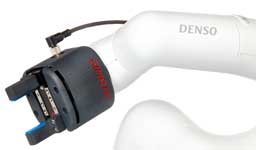 Robotic grippers, EOAT, gripper kits for cobots and industrial robots
Robotic grippers, EOAT, gripper kits for cobots and industrial robots
“We have our customers to thank for the fact that we have also been manufacturing wafer sorting systems since 2001,” explains Sven Wollstadt. Originally we only had laser markers in our range until a customer approached us. He was of the opinion that with our technology we could also manufacture the sorters. Such a sorting or transfer machine for silicon and other wafers is the "IL C3800", which is now equipped for the first time with mechatronic grippers or swivel units.
Gentle removal of the wafers
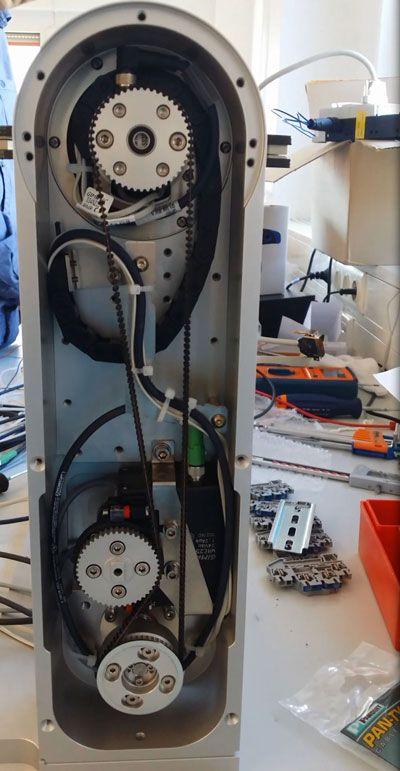 In a modular wafer processing system, there are transport systems between the individual stations that transport the sensitive wafer wafers from one station to the other. Since absolute clean room conditions prevail here, this handling must be fully automated. It is also important to ensure that neither the front nor the back of the wafer with the Robot to prevent contamination in the process.
In a modular wafer processing system, there are transport systems between the individual stations that transport the sensitive wafer wafers from one station to the other. Since absolute clean room conditions prevail here, this handling must be fully automated. It is also important to ensure that neither the front nor the back of the wafer with the Robot to prevent contamination in the process.
The IL C3800 type wafer transfer system has the task of automatically opening a cleanroom-compatible plastic box FOUP (front open unit pot), removing the contained wafers, turning them over, aligning them and handing them over to the subsequent processing unit. A three-axlerobot fetches the wafers from the loading station and places the chips very quickly and precisely on the so-called Pinball (Turning station).
Two Gimatic gripper accept the wafer. The swivel unit turns this wafer arriving on the wrong side absolutely synchronously with the help of a precision toothed belt drive. Finally, the grippers place the silicon wafer on the so-called aligner, where it is aligned for further transport.
Here is one reading imaging camera the barcode of the wafer. The transfer machine transfers the information contained in the barcode as well as the exact position of the wafer to the following processing station via Ethernet, which then automatically carries out the correct process in the right place
200 wafers per hour in clean room
"With this automation, the user saves himself the time-consuming transport process and can devote himself to his core task, such as laser ablation of layers," says Thomas Rölz, explaining the need for investing in a machine, the complexity of which only becomes clear on closer inspection. But that they are for the Clean room class 1 allowed to add around 200 wafers per hour to the process fully automatically, justify the investment.
In this turning station, two Gimatic grippers from MPPM 1606 and a swivel unit of type MRE 25180 are used for the first time. "We wanted away from pneumatics, because it generated too much abrasion in our predecessor machines, was too big, was too complex to implement and could not handle the wafers gently enough, ”says the head of development, describing the reasons for the switch from pneumatics to mechatronics. In particular, the abrasion caused by the pneumatics was no longer acceptable here because the laser marking in the micrometer range must be absolutely free of particles.
Currentless gripping force safety device
"Back then, I was researching on the Internet who specialized in the manufacture of such mechatronic components," he recalls. Gimatic implemented both of the features that were important to us in its products - both the rotation and a very compact design. "These are simply our USP: small design, simple control and gripping force retention even when de-energized, ”adds Harry Kern, technical advisor at Gimatic Vertrieb GmbH and contact person for the laser specialist. “Incidentally, we were the first to offer a currentless gripping force safety device.” The entire system is patented.
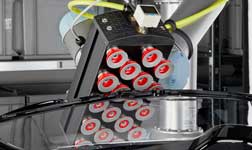 These vacuum grippers handle everything
These vacuum grippers handle everything
“That is a very important point,” says Sven Wollstadt, “that the gripper remains in the state it was last in, even if the machine fails.” This is particularly important with the undefined states of the swivel unit. The fact that the individual steps of the EU energy efficiency directive To reduce the primary energy consumption by 20 percent by 2020, it goes without saying that the methodology: one power on - end position - done.
"With this pinball machine and the self-sufficient parallel working method we are pioneers", reports the head of development proudly. In conventional systems, the robot transports and uses the wafer in succession.
Consider the sensitivity of the wafers
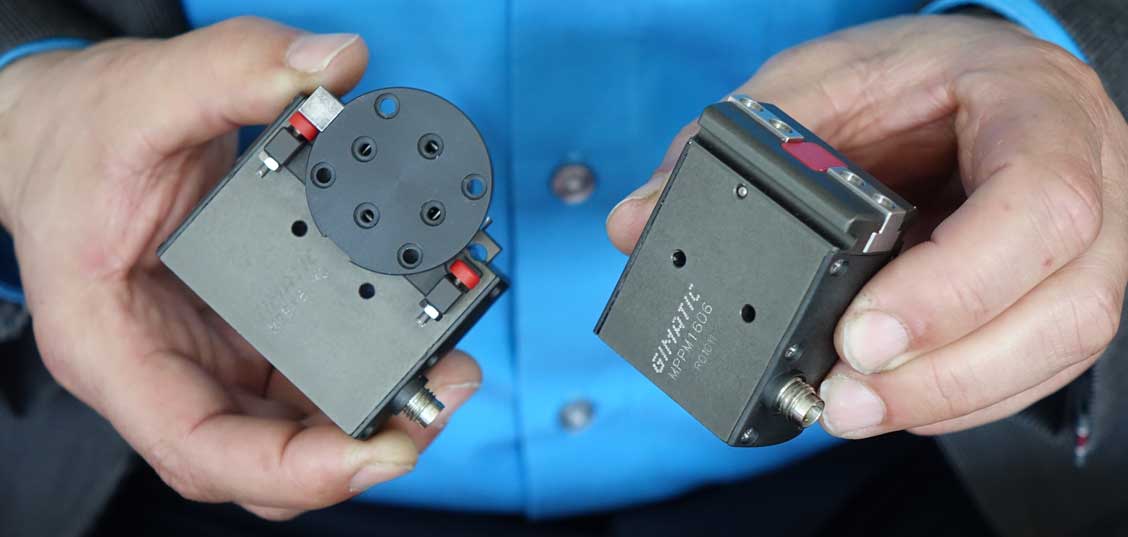
“The greatest challenge for us in this application was the sensitivity of the wafers,” remembers Harry Kern. The wafer may only be gripped by the first millimeters of the outer diameter with a force of only five Newtons. Otherwise the gripping process would destroy its structure. A pneumatic gripper can no longer do that.
"At our Electric Gripper strength builds up as needed. The gear unit brings the gripper jaws up to resistance, i.e. hitting the wafer. The jaws cannot move any further, but the spindle continues to work and thereby generates the gripping force. The control card in the gripper registers this and switches off at a preset force, ”says Harry Kern, describing the gripping process.
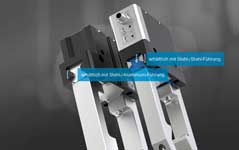 gripper | pneumatic + electric from various manufacturers
gripper | pneumatic + electric from various manufacturers
With the pneumatic system, the gripper hits the workpiece with its full gripping force at once and would destroy at least one wafer. Innolas has also designed carbon jaws to support this application, which also take on a spring function and thus reduce the gripping force.
It's worthwhile to rethink mechatronics
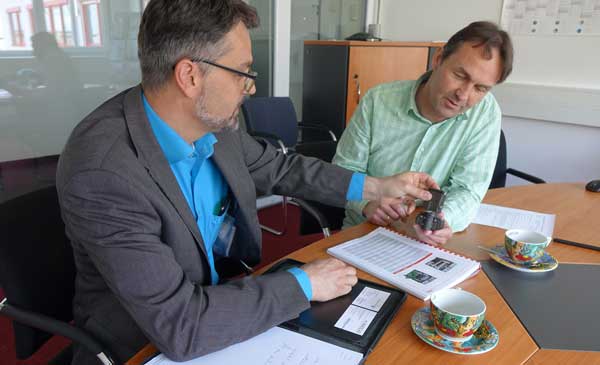 “The new development was extremely complex, but the swivel unit is now much easier to produce,” summarizes Sven Wollstadt. In this way, maintenance costs and production costs could be greatly reduced.
“The new development was extremely complex, but the swivel unit is now much easier to produce,” summarizes Sven Wollstadt. In this way, maintenance costs and production costs could be greatly reduced.
Production times alone have been reduced by a third. The simple control of the gripper and swivel unit also allows the digital signals to be sent directly to the control. So it is not surprising that only mechatronic grippers should be used for new developments.
The customer, on the other hand, can look forward to lower total costs or total cost of ownership. Because Gimatic guarantees maintenance-free up to 10 million cycles. "We are the only supplier who offer a gripper with a 3-pin control 24 V and therefore do not need an additional module", adds Harry Kern.
And the very simple control option saves programming and training of the operator. "The price / performance ratio of the modules is so great and we really enjoyed using them," says Sven Wollstadt happily. And adds to the assessment: "We have many suppliers in-house, but Gimatic was very committed and supported us in a very constructive manner."
Taste of speed and pin
In general, there is a trend in construction to give preference to mechatronic products over pneumatic ones. “Not least in the course of Industry 4.0development and the advent of collaborative robotics, customers are now specifically asking about our products,” says Harry Kern. And so he gives a little foretaste of new developments from Gimatic:
We now have a speed version in the program, which is up to 120 gripping cycles per minute reached. There is also a gripper variant that emits a signal when the peak current is reached and the drive motor is switched off. This signal can be used to define it as a "component gripped".
You might also be interested in...
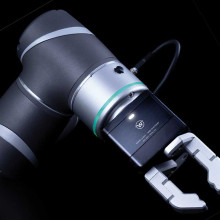
Robot Gripper | Automated little hands
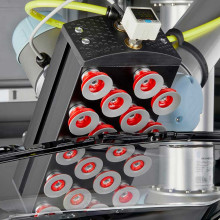
These vacuum grippers handle everything
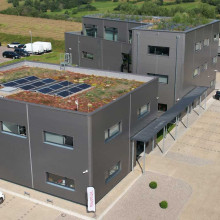
Gimatic | The smart gripper specialist
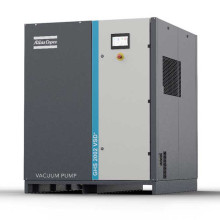
vacuum pump | Innovations for Industry 4.0 + branch-specific
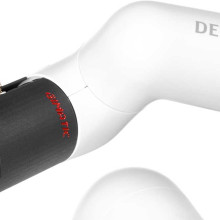
Robot grippers and EOAT solutions
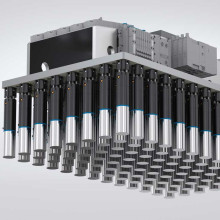
gripper | pneumatic, electrical, magnetic

Angela Struck is editor-in-chief of the development scout and freelance journalist as well as managing director of Presse Service Büro GbR in Ried.
